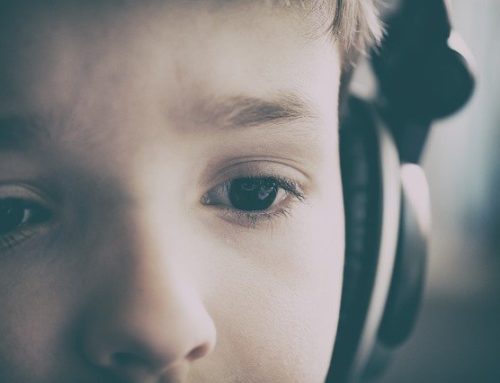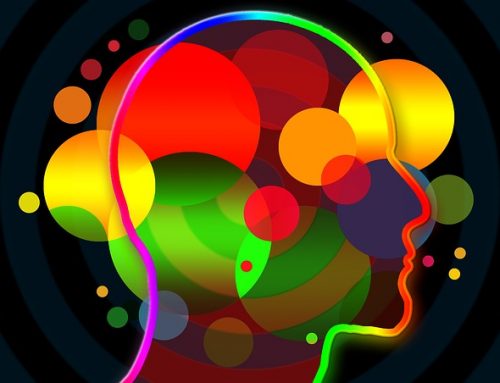If you read some of our previous blog posts, you’ll know that the brain’s “communication apparatus” is actually a multitude of specialized structures from the ear to the primary auditory cortex acting in concert to process and integrate different kinds of auditory and visual information; you’ll also know that effective listening depends in part on each link in that processing chain being properly “calibrated” to recognize and focus on the relevant sonic details that comprise intelligible (and ideally, not ear-splitting) speech.
 This is not to suggest that listening is some passive process that can be operated like a radio, where the proper “settings” only need to be “dialed in” once and can afterwards be left alone (in fact, not even passive hearing is quite so laissez-faire), even though for the majority of the 20th century that’s more or less exactly how it was treated by both medical science and education research. In most classrooms up until as recently as the 1990s, reading and listening comprehension were grouped together (pedagogically speaking) as “language skills,” and since it’s common knowledge that spoken language is (usually) acquired naturally through one’s environment, it was assumed that listening skills could be expected to develop in parallel with reading skills; thus the latter skill even to this day is still heavily favored in most standard language curricula.
This is not to suggest that listening is some passive process that can be operated like a radio, where the proper “settings” only need to be “dialed in” once and can afterwards be left alone (in fact, not even passive hearing is quite so laissez-faire), even though for the majority of the 20th century that’s more or less exactly how it was treated by both medical science and education research. In most classrooms up until as recently as the 1990s, reading and listening comprehension were grouped together (pedagogically speaking) as “language skills,” and since it’s common knowledge that spoken language is (usually) acquired naturally through one’s environment, it was assumed that listening skills could be expected to develop in parallel with reading skills; thus the latter skill even to this day is still heavily favored in most standard language curricula.Well, chalk up another point to regular readers of our blog, who will remember from another recent blog of ours that difficulties with reading such as dyslexia can be caused or aggravated by problems within the brain’s listening apparatus. To give us a better sense of what can go wrong here, here’s a concise description of what the brain must do to achieve “effective listening:”
Analyzing and Integrating Information
- First, it must perceive the sound, identify it among all other sounds in the environment, and segment it according to its knowledge of language, all the while moving the continuous stream of input in and out of working memory to keep track of the individual ideas that make up the words as well as the overall meaning of the sentence;
- Process the actual meanings of those segmented sounds (i.e. words), sorting relevant from irrelevant material on the fly, integrating information that comes from the speaker such as mannerisms, accent, tone, or anything else into the working memory that is currently retaining the sentence for the listener;
- And finally, apply their outside knowledge (of their environment, cultural context, personal characteristics of the speaker, the language itself, etc) to this continuous stream of information to form a complete meaning and eventually open up a path toward a relevant and useful response.
The first thing you might notice is that, for something we do constantly every day, listening and communicating sure seems to take a lot of computational power on our part – and hopefully you can imagine how challenging it can be to a person for whom any of those fine wires listed above are crossed for any reason. A second noteworthy observation is that, taken in abstract, the skills involved in effective listening and successful reading seem quite similar. A reader perceives words on the page in a different manner than a listener, but to obtain meaning must be able to recognize the same sounds; with different tools at their disposal, the reader must also segment and sort units of information with their working memory; and the reader must still apply their outside knowledge of a text to comprehend it well enough to respond in a relevant manner.
Processing Information to Comprehend
This all may seem like a long way to go to prove the already fairly intuitive point that improved listening comprehension leads to improved reading comprehension. The key point is that several aspects, including attention, processing speed and working memory, are all shared between the processes of both listening and reading, including comprehension. Therefore, we find that if someone has not yet fully developed their listening networks in their brain, regardless of their level of interest or ability, the difficulties with communication in all forms can quickly multiply; and for certain people, such as children in school, it can have an arresting effect on their cognitive and social development writ large.
This potential for suboptimal connectivity in the listening apparatus is exactly what the Tomatis Listening method is designed to target. Through individualized assessment followed by well-defined stimulation of relevant components of the brain’s listening system, these deficiencies or miscalibrations can be retrained with the purpose of optimizing both one’s listening skills and one’s capacity to cope with their ambient sonic environment. This leads to not only improved attention, listening and reading comprehension, but in today’s high-pressure, stimulus-rich world, better quality of life overall.
To learn more about how we work with Dr. Tomatis’ Listening Training Approach and the manner in which it can change your or your child’s auditory processing for the better please click here Auditory Processing Disorder.





